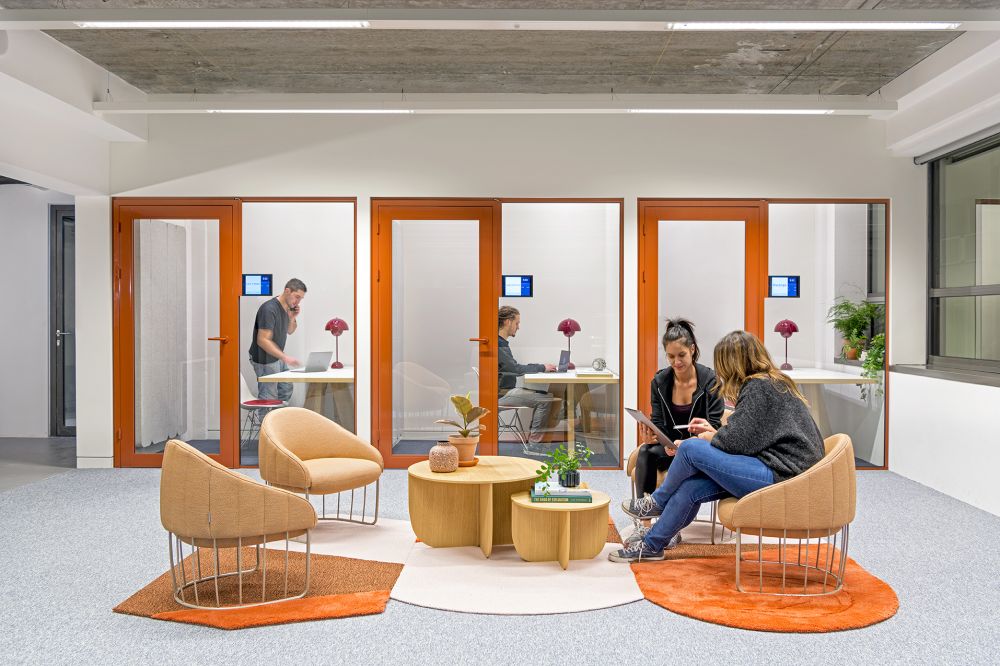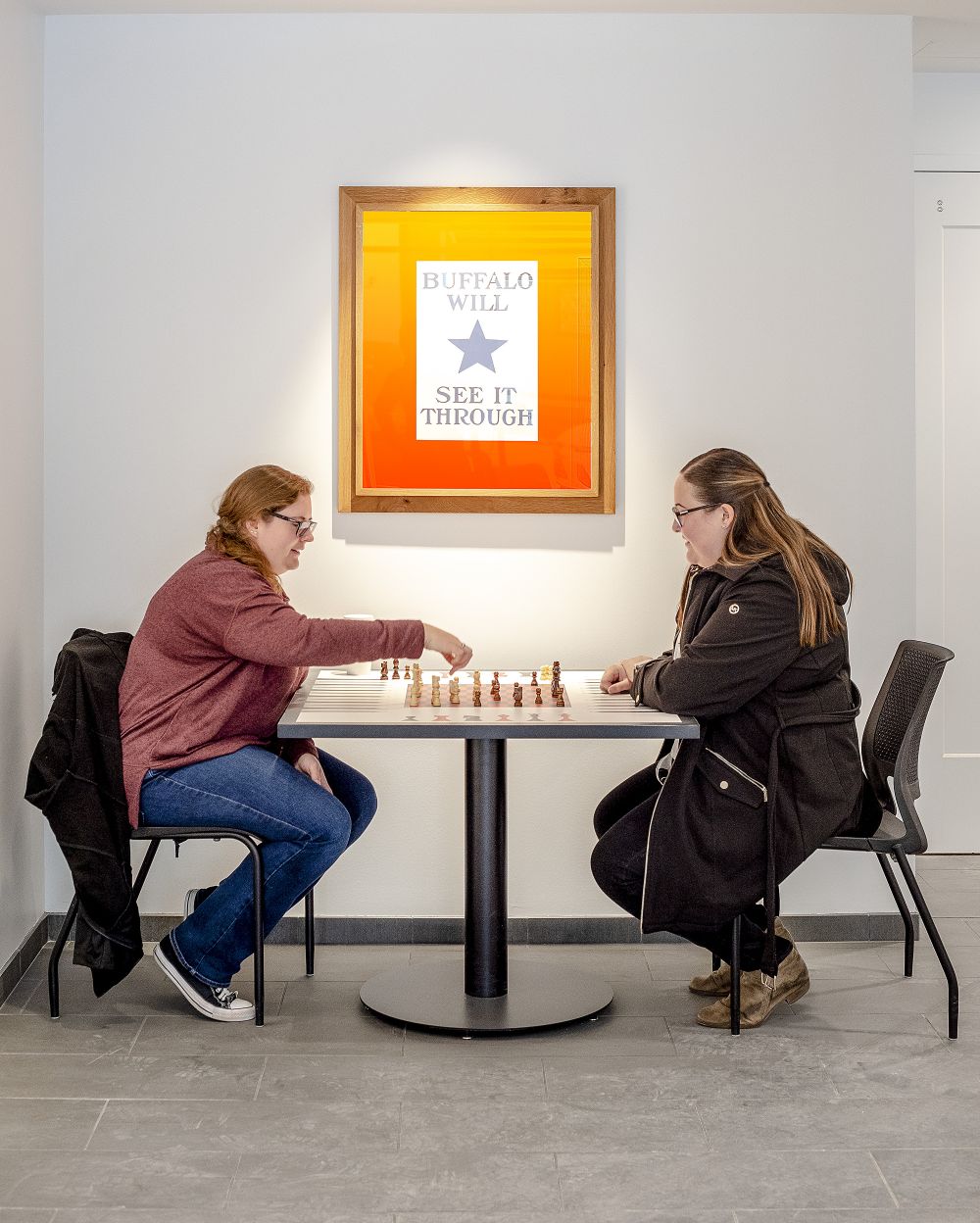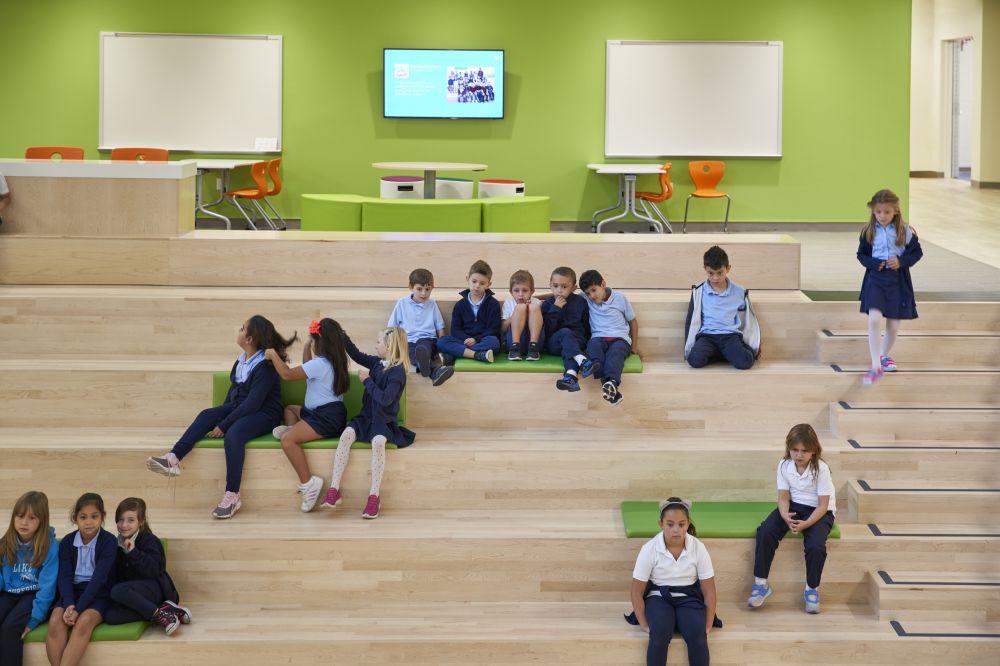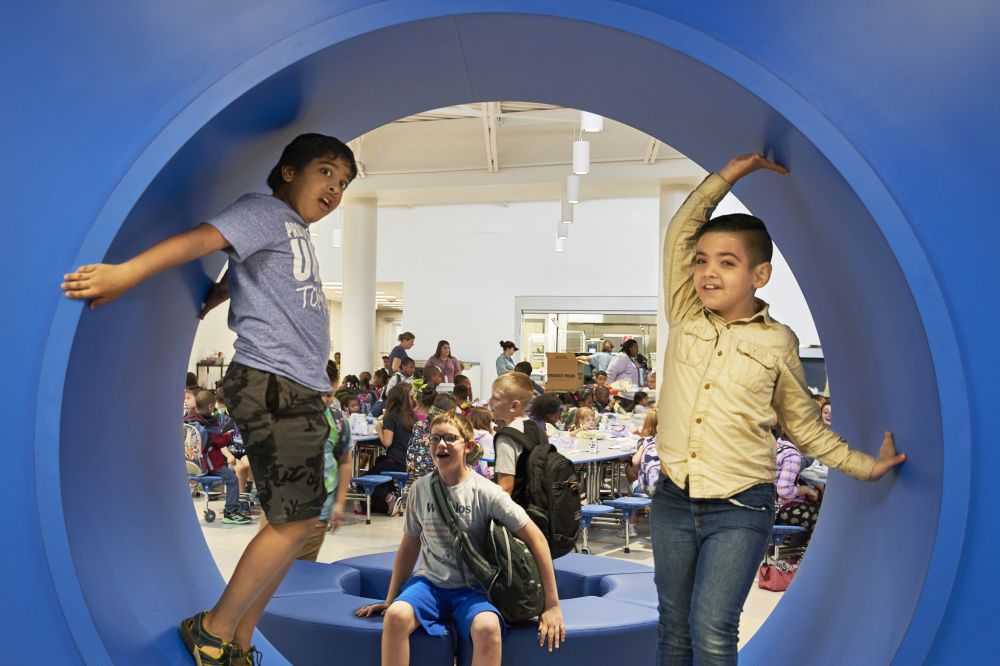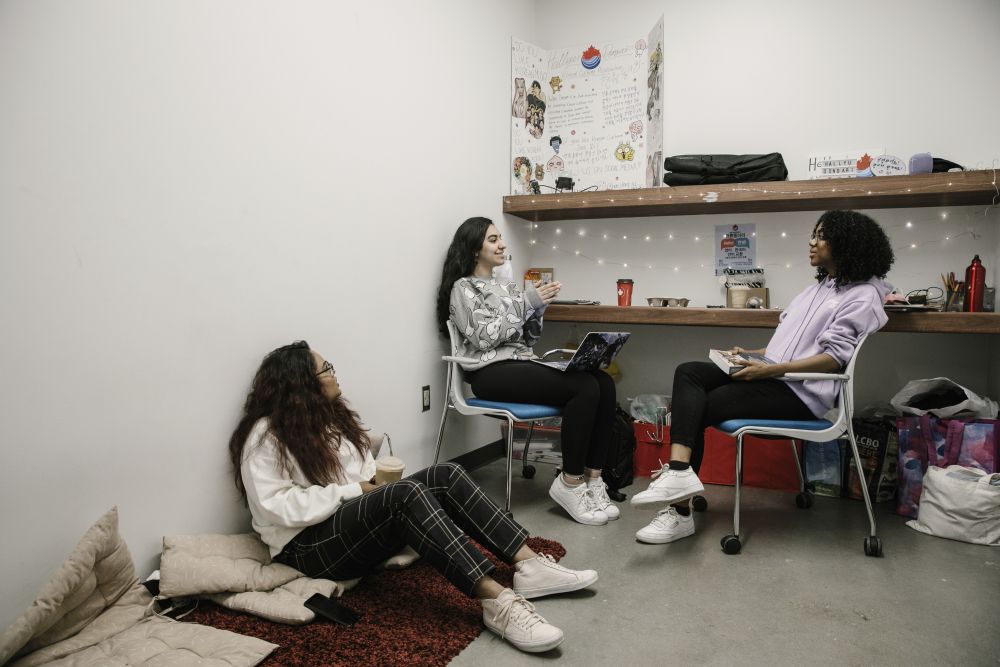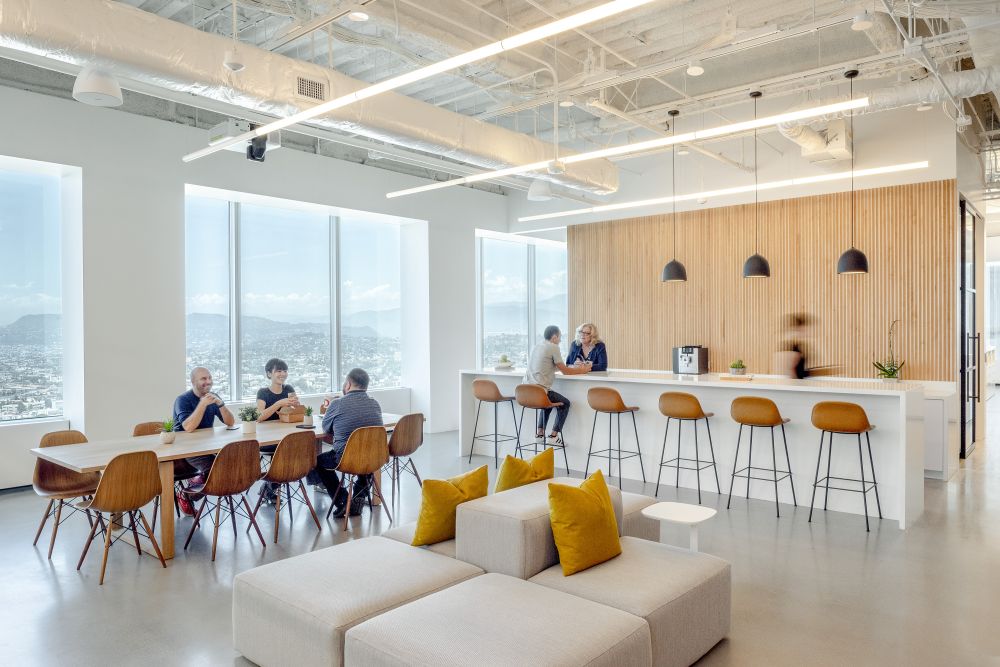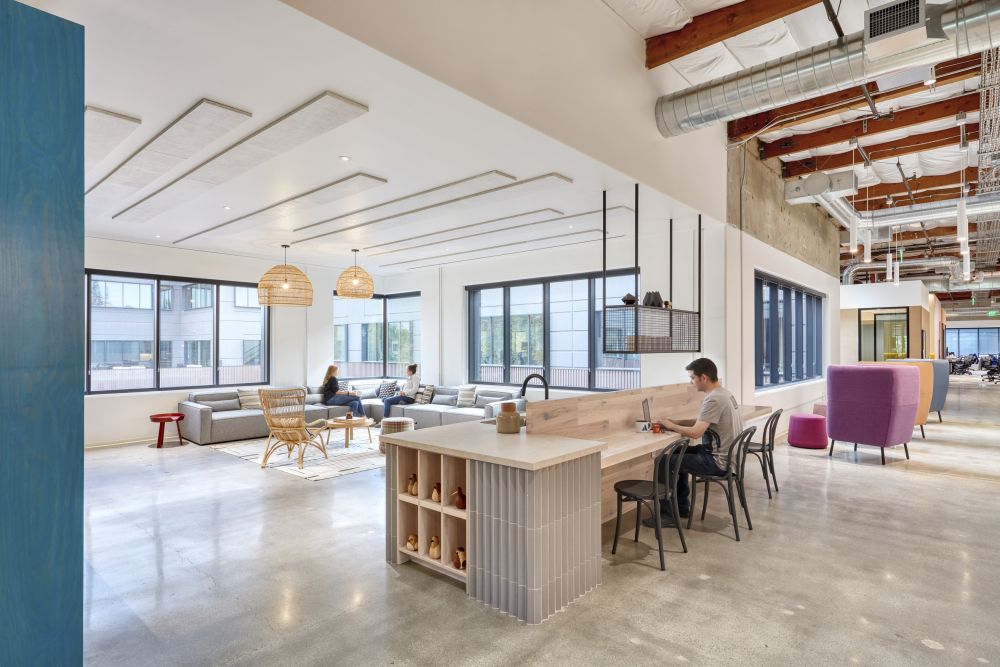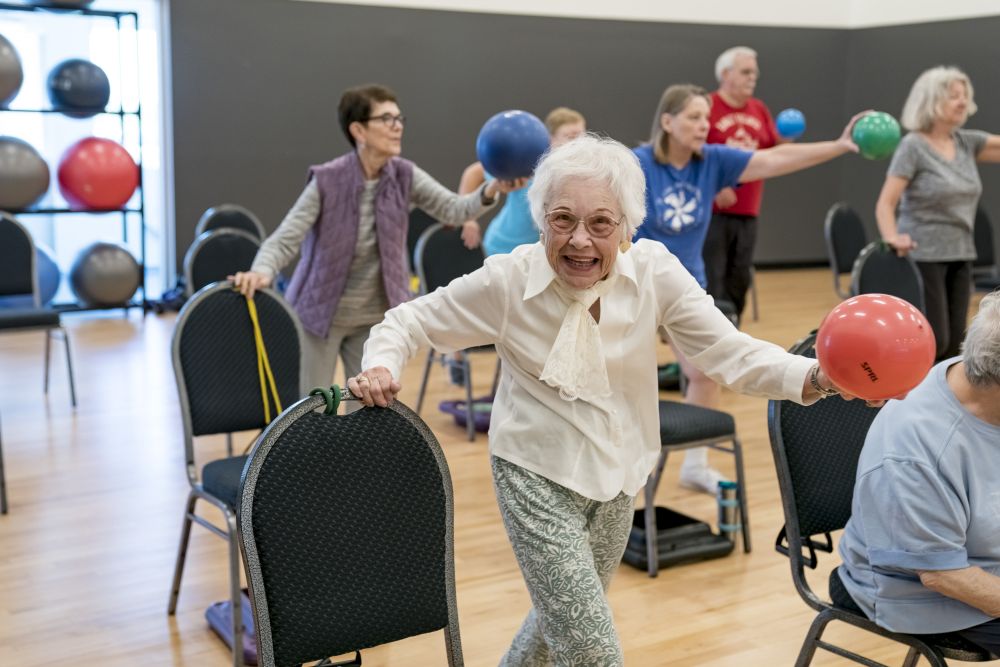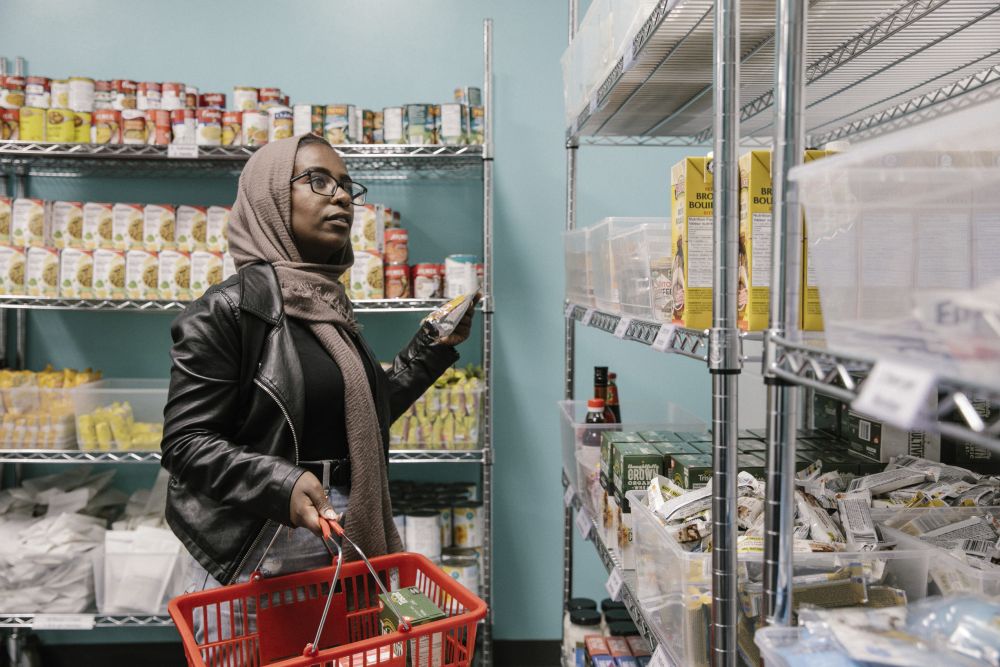The paradox of loneliness in a connected world—and how design can help
Erinn Connor
July 13, 2022
Social Sharing
As the adage goes, human beings are social creatures. We crave friendship, conversation, emotional connection and sometimes even just the presence of someone else. A belly laugh with a best friend, running into an old neighbor at the grocery store, a collaborative conversation with a colleague or reading silently alongside a partner—these meaningful interactions and connections fuel us.
The pandemic threw off the natural rhythms of our encounters with others. Most of us stayed home and if we did venture out we intentionally stayed six-feet away from others. Work friends, concerts, friend get-togethers, everything was put on hold. This sudden isolation compounded an already creeping epidemic of loneliness—among the elderly, among children immersed in technology, among adults taking advantage of convenient ways of life such as next-day deliveries and grab-and-go groceries.
It has triggered what the United States surgeon general calls an “epidemic of loneliness,” a public health crisis on the same scale as the opioid and obesity epidemics. “Loneliness,” said Surgeon General Dr. Vivek Murthy, “has real consequences to our health and well-being.” When you’re lonely, levels of the stress hormone cortisol go up, according to the Cleveland Clinic. This puts people at risk for vascular issues, inflammation and heart disease, as well as cognitive function problems and decreased immune system.
A 2018 study by the Kaiser Family Foundation revealed that one in five Americans said they always or often felt lonely or socially isolated.
Since the loneliness epidemic has a myriad number of causes, and affects such a wide swath of demographics, there is no one-size-fits-all solution. But we can meet people at whatever stage of life they are in, in the places they frequent the most to try and curb loneliness and foster healthy human connections. Our design experts weighed in on how we can best design for community and togetherness for children and youth, young adults, those in the workforce and the elderly.
Children and youth
The experience of children has changed drastically over the last two decades. Kids today have grown up with the digital and virtual world, and often use devices before they enter grade school. Kids also face increased expectations and more structured activities outside of school, compared to generations past who had larger amounts of free and lightly supervised time to use their imaginations.
These stressors (such as long-term virtual learning, lack of playdates or sports), plus the toll of the pandemic, have caused an unprecedented mental health crisis in our children. Recent data showed that in 2020, the percentage of emergency department visits for mental health crises increased by 24 percent for kids ages 5 to 11, and 31 percent for those 12 to 17, compared with 2019. It’s clear more needs to be done to keep kids’ mental health from reaching a point where they need emergency services or inpatient treatment.
Our Whole Child, Every Child approach stems from a research initiative to elucidate specific design aspects that can positively affect children and the people they interact with. Children have unique needs along with this unique time, and our design suggestions reflect that.
“Most of the mental healthcare resources in this country are focused on treatment or helping patients after their crisis has occurred,” said Stephanie Vito, a mental and behavioral health designer who spearheaded our Save the 8s Initiative. “We need to invest more in deploying mental healthcare spaces and design strategies across cities to intervene before a crisis occurs or escalates.”
Some of our key strategies for combating loneliness in children:
- When designing new schools, incorporate a space for mental health resources, counseling or treatment. Children spend most of their time at school, and teachers can pick up when something isn’t right or a child is isolated. Having resources right at school could address problems before they escalate.
- While virtual learning has benefits, a prolonged period of it during the peak of the pandemic set many students back and isolated them from their peers and in severe cases, delayed social milestones. With COVID and other airborne illnesses still part of our reality, making in-person schooling as safe as possible going forward is key. Updating HVAC systems and providing robust ventilation can keep children and staff safer and keep them with their classmates.
Young adults
Beginning college is an inherently fraught experience, where young adults are often away from home for the first time and learning how to be independent. That in and of itself can be a lonely time, finding friends and what direction to take in life. The increased reliance on technology makes it easier than ever to talk with friends, but cannot replace in-person interactions. Students who succeed are often ones who have those connections and are thriving socially.
“Students need to feel comfortable knowing they don’t know everything, that they can take risks and have support while doing so,” said Marisa Nemcik, a student life strategist and designer in our education practice. “There’s an importance to spontaneous interaction spaces, where they are seeing other people and activities to engage in and feel part of the experience.”
Other important design considerations for young adults include:
- Interior design can be a game changer in providing choice in how a person wants to engage. The type of furniture and its location lets people choose where to sit, who to sit with and how they’re engaging with others. This way it is not forced or awkward, which it can be with conjoined seating or individual seating-only options.
- Housing spaces that create a better sense of community can stave off isolation from the start. Informal opportunities spanning common areas as well as community kitchens can bring social connection. Or, more overt student social and wellness spaces that intentionally bring people together (i.e., game rooms with scheduled activities) can accelerate connectivity.
Testimonials
Adults in the workforce
Here are a few strategies our workplace strategy team shared that they employ to create productive connectivity and camaraderie:
- In the wake of the pandemic, the role of commercial real estate is evolving for each company. The more agency organizations offer their people in shaping workspaces, the more likely they’ll be to use them. While each company needs custom solutions, there’s definitely a shift toward workplaces being oriented around bringing people together for teamwork, culture building and connection. This is not only good business, but will help adults reclaim socialization in our new reality.
- In healthcare workspaces or any fast-paced work environment, there must be a conscious effort to protect a worker’s alone time and make collaboration as efficient and productive as possible. Pamela Steiner, a design and experience consultant within Blue Cottage of CannonDesign, noted using modular solutions or built-in flexibility for workplaces can ensure an organization can adapt to hybrid working, new technology, different workflows and more without losing opportunities to connect. “Periodic assessments of workflows and getting employee feedback can let a company know if its employees are both productive and collaborating well,” she said.
Older adults
Old age often brings the loss of independence and increased difficulty getting around to see friends and family. Seniors unable to live by themselves typically live in assisted living or nursing homes, and being away from their family and friends can easily lead to or amplify loneliness. The pandemic exacerbated this, as seniors were at a high risk for severe illness.
Designing senior living spaces to feel more like a home and less like an institution can not only improve physical quality of life, it can also create a better sense of belonging. Familiarity and ease of getting around can go a long way in making seniors feel like they have a true home. A great example is the Veterans Home of California in Yountville—a new residence facility we're designing to create a sense of home for an older Veteran community.
Margi Kaminski, co-leader of our Health Interiors Practice with years of expertise in senior living design, shared these strategies for easing senior loneliness:
- Ease of wayfinding to common spaces makes a huge difference. Putting the dining room or activity room at the end of the hallway can make it easy to get there, or having memorable “landmarks” on the way creates a routine and familiarity.
- Simplicity goes a long way. Adding homey touches like a fireplace, plentiful comfortable seating and places for their own items from home or family helps create a sense of place and peace of mind.

